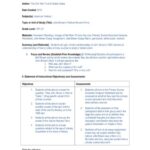
I found this textbook and its exercises to be a useful teaching and learning tool. The text is divided into topical chapters, which is appropriate considering that the concepts build on each other. This makes it easy for an instructor to pick which sub-topics to cover. Small business owners unfamiliar with accounting jargon need a manual that speaks their language.
Introduction to Financial Accounting

Each audience will approach the accounting manual with a different set of needs and expectations. Addressing these needs is a strategic part of not just writing think and grow big the manual, but of its effective implementation. Most small businesses will either do their books themselves or outsource the work to a professional.
Principles of Accounting Volume 1 Financial Accounting
OpenStax has traditionally been inclusive in its examples. Principles of Accounting has a certain flow to it which this book replicates. The authors do a fine job of proceeding through the expected topics at a manageable pace while giving sufficient depth for an introductory course. To the contrary, the graphics and flow charts break up the material very nicely. However, students might find a glossary helpful, as well as an index. Access and download collection of free Templates to help power your productivity and performance.
Significance of accounting policies

Track business expenses such as transportation, entertainment, lodging, and meals with this expense report template. Specify the time frame at the top of the spreadsheet and list all expenses with dates for each transaction. The template provides space to add notes or detailed descriptions as needed. Try setting aside and scheduling a ‘bookkeeping day’ once a month to stay on top of your financials. Use that day to enter any missing transactions, reconcile bank statements, review your financial statements from the last month and make any major changes to your accounting or bookkeeping.
Accounting Book

The double-entry system of bookkeeping is common in accounting software programs like QuickBooks. With this method, bookkeepers record transactions under expense or income. Then they create a second entry to classify the transaction on the appropriate account. Business transactions can be recorded by hand in a journal or an Excel spreadsheet.
It helps you catch errors quickly
- The chapters might be distracting or require modification but the interface was straight-forward.
- Each chapter is divided into subsections that may be individually assigned if that is more appropriate for a class than assigning the entire chapter.
- Under single-entry, journal entries are recorded once, as either an expense or income.
- With this method, bookkeepers record transactions under expense or income.
Even with these tools, you may not have the expertise you need to handle the responsibilities of a bookkeeper. This isa great template to use if you need to practice entering journals into the bookkeeping t-ledgers. Calculate and record the depreciation expense of your assets. List out all your unpaid bills – use the cash flow form (see below) to help you figure out when you will have enough money to pay them. See at a glance how many sales have been made to each customer in date order. You would use this to prepare your statement of account form No.10.
The authors used the year 2015 in most of the problem and examples. This might make the text “seem” out-of-date in a few years. For budding accountants, use practical https://www.online-accounting.net/ examples to illustrate the application of policies in real-world scenarios. Every transaction you make needs to be categorized when it’s entered in your books.
With the books that I use in my courses (McGraw-Hill, Wiley, and Pearson), I rely heavily on the LMS platforms that the publisher provides. I could be wrong, but I did not see evidence of that in this text. Of course, I could create such https://www.quickbooks-payroll.org/how-to-prepare-accounts-receivable-aging-reports/ a homework system with our university’s blackboard system but it would be a great deal of work, especially if a robust and comprehensive (content) system was created. Again, if I missed that type of technology and content, I apologize.
I appreciate the textbook’s focus on accounting and business principles. The content is tailored to provide comprehensive insights into accounting practices and their applications in the business world without perpetuating cultural insensitivity. The content within the chapters can be broken-down and assigned as instructor plans for the course length.
As a result, the debits will always equal the credits and the trial balance will always be in balance. No longer will hours be spent looking for errors that occurred in a manual system. A bookkeeping journal sheet to help you record the ‘story’ of your daily financial transactions as per bookkeeping journals. These forms are useful as templates for self-employed people or treasurers of clubs, or small start-up businesses who are keen to maintain a complete or partial manual bookkeeping system. Some of the bookkeeping and accounting forms listed here have been pulled together for easy access from various parts of this site. This book is specifically designed for both accounting and non-accounting majors, explaining the core concepts of accounting in familiar ways to students.
Each chapter is thoughtfully organized into digestible segments, allowing readers to navigate through the material with ease. This breakdown into subsections enhances comprehension by presenting information in manageable portions. The textbook is very clearly divided into separable modules, making it easy for both students to read and for instructors to choose which modules to include in their course. Ramp is a leading-class software that makes financial reporting headaches a thing of the past. Our platform brings automation into the equation, keeping real-time records of all financial aspects of your business.
A simple form for keeping track of cash put in and cash taken out of the petty cash box. This text is written in a single voice and allows for consistency through out the entire textbook. The types of graphics and the language that provides structure is also the same throughout the entire book. This textbook has all of the content that I cover with the publisher textbook that I have used for the past 6 years. There is much consistency between the chapters in terms of how they are structured. The life examples are drawn from companies which are relevant and understandable to students today.
No comment yet, add your voice below!